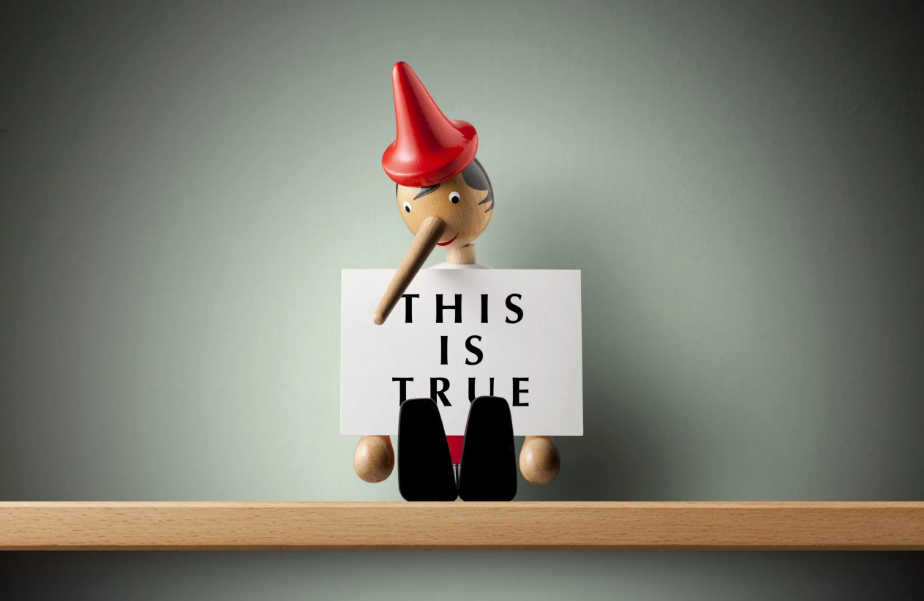
In the intricate dance of human interactions, the ability to discern truth from deception is invaluable.
While words can easily be manipulated, body language provides a more candid view into a person’s true feelings and intentions.
Here’s a detailed guide on how to spot a liar through body language, expanding on the initial insights with deeper exploration and practical advice.
It’s All in the Eyes
The eyes are often heralded as the windows to the soul, capable of revealing the deepest truths or concealing them. Liars might blink excessively or avoid direct eye contact, a sign of the cognitive burden lying imposes.
Conversely, some may overcompensate by holding your gaze longer than natural, attempting to mask deceit with feigned sincerity.
Observing these eye movements, along with dilated pupils or rapid shifting, can offer clues to someone’s honesty.
Watch Their Hands
Hand gestures and movements can unveil nervousness inherent in deception. Liars might touch their face, tug at their hair, or engage in excessive fidgeting, betraying discomfort.
Notably, Dr. Joe Navarro, a former FBI agent, highlights how deceptive individuals might use barrier objects as a physical shield, creating a literal barrier between themselves and their interlocutor, signaling a subconscious desire to protect oneself from the truth.
Notice Their Posture
Posture speaks volumes about a person’s confidence and openness.
A liar might adopt a closed posture, such as crossed arms or legs, indicating defensiveness or an unwillingness to engage fully with the truth.
This shift in posture, away from an open, relaxed stance, can be a silent admission of discomfort with the information being shared.
Listen to Their Voice
Vocal cues play a crucial role in detecting lies.
Changes in pitch, hesitations, or alterations in speech rate can all suggest cognitive strain and emotional stress associated with lying.
A voice that suddenly climbs higher, or speech peppered with more “umms” and “ahhs,” can indicate the effort of concocting a story on the spot.
Check for Consistency
Consistency—or the lack thereof—is a powerful indicator of veracity.
Liars often struggle to maintain a coherent narrative when asked to recount their story multiple times or from different angles.
This principle applies not just to the story’s content but also to the congruency between verbal accounts and non-verbal cues, looking for mismatches that might hint at deception.

Do They Provide Too Much Detail?
Over-elaboration can be a tactic to make lies seem more believable, bombarding the listener with details to distract from the lie itself.
This behavior reflects the liar’s understanding that truth is often detailed and seeks to replicate this texture in their deceit.
However, such stories frequently lack the natural flow and relevance of genuine accounts.
Are They Relaxed?
Relaxation, or the absence of it, provides significant insight into a person’s truthfulness.
A liar is likely to display signs of physical and psychological discomfort—stiffness, excessive sweating, and forced smiles.
In contrast, a person at ease with their narrative exudes a natural, consistent demeanor, with their non-verbal cues aligning with their words.
The Bigger Picture
It’s crucial to approach the interpretation of body language with nuance and empathy.
Not all signs of nervousness equate to deceit, and cultural, contextual, and individual differences can influence body language.
Hence, while these cues can guide us in identifying potential dishonesty, they should be considered within a broader analysis that includes context, relationship dynamics, and known behavioral patterns.
Final Thoughts
Understanding body language is about enhancing communication and trust, not about casting unfounded suspicions. With practice and mindful observation, we can improve our ability to discern truth from deception, enriching our interactions and fostering deeper connections.
Remember, these tools are best used to inform, not accuse.
Observing, asking open-ended questions, and maintaining an open dialogue can often lead to truth more effectively than confrontation.
As we refine our skills in reading body language, let’s commit to using this knowledge ethically, with respect for the dignity and privacy of others.

